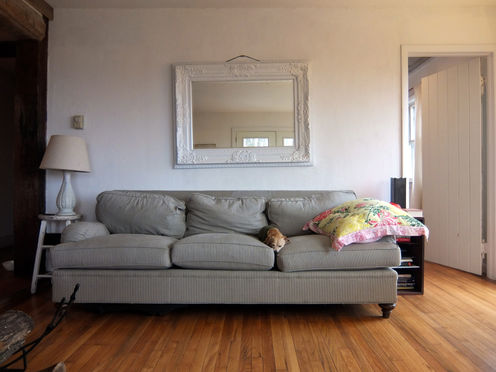
Current guidelines suggest Aussie adults should accrue at least 150 minutes of moderate-intensity exercise each week. However, 60% of us fail to meet this recommendation, and around one in six aren’t doing any regular exercise at all.
If this sounds like you, don’t despair. Studies show that any amount of physical activity is better than none. So there’s a strong rationale for getting off the couch, even if 150 minutes seems impossible.
If you’d like to be more active but aren’t sure where to start, here are some tips and ideas to help you move towards an active lifestyle.
Walk the talk
If you’re not doing any exercise at all, one of the best ways to start is with walking. Walking has been described as the nearest thing to a perfect exercise as it costs nothing, can be done almost anywhere and is suitable for people of all fitness and skill levels. In addition, studies have shown that walking at a brisk pace (around 5-8km/h) can result in improved fitness and blood pressure, modest weight loss, lower risk of heart disease and reductions in depressive symptoms.
A number of great programs and resources are aimed at promoting walking. As a starting point, check out the evidence-based 10,000 Steps program and the great walking information provided by the Australian Heart Foundation. For added motivation and support, you can even register to join a Heart Foundation walking group near you.
After building your fitness through walking, consider giving parkrun a try. It’s a timed 5km fun run, but you can mix up periods of running and walking however you’d like. They are free to join and are held weekly at sites across the country. The parkrun community welcomes people of all ages and fitness levels, so don’t be concerned you’ll look out of place.
Make exercise more enjoyable
It’s all well and good to start exercising, but the real challenge is often in sticking with it. You are much more likely to maintain your exercise habit if you find something you enjoy. Fortunately, there are some simple tricks for making exercise more fun.

First, find a friend. By meeting up with a friend, your exercise sessions are also an opportunity for socialising. And friends can be a useful distraction from the difficulty of the activity or any embarrassment you may feel exercising in public.
If you’re struggling to find a friend, furry friends are just as good! Dog owners are (on average) more active than those without canine companions.
Second, listen to music. If you prefer to exercise alone, music is another great way to distract you from feelings of exertion, leading to greater enjoyment. Also, selecting music with a fast tempo can make you work harder than you might otherwise have done.
Finally, exercise outdoors. Exercising in the great outdoors, in particular natural environments and green spaces, can give you a feeling of vitality that indoor environments just can’t match. In a recent study, women walking outdoors reported greater enjoyment and stronger intentions to continue walking in future compared with those walking indoors.
Plan to succeed
Preparation and planning are critical when trying to implement a new habit. This is certainly true for exercise.
Although many people believe they need to wait for motivation to arrive before exercising, the reality is that successful exercisers plan for times when their motivation may wane. Research has consistently shown those who plan their exercise sessions (known as action planning) are much more likely to do them.
Planning for the barriers to exercise that inevitably pop up as part of everyday life (known as coping planning) is also important for helping you stick with exercise long-term. You can find a free planning template and some additional information here.
In addition to planning, it’s useful to monitor your progress over time to see whether you have been achieving the exercise goals you’ve set. There are some great apps that can help you with self-monitoring, such as the Way of Life habit tracker. Check out some other top-rated healthy living apps here.
Go hard then go home
The most commonly cited barrier to exercise among adults is lack of time. For parents of young children or busy working professionals, finding a spare 150 minutes a week might seem like a pipe dream. But, exciting new research into the effects of high-intensity interval training is showing that short, highly vigorous “bursts” of exercise followed by brief rest periods can provide, in a fraction of the time, the same health benefits as larger volumes of training.
According to one study, improvements in important health markers were achieved through as little as three minutes of exercise per week! High-intensity interval training may not be for everyone, but if you can handle the “all out” efforts, this mode of training could be a great way to be active if you are time-poor.
Starting a new exercise habit can be a real challenge, but the benefits are well worth it. Just remember, fitness is a journey not a destination … so try to enjoy it.
Jordan Smith does not work for, consult, own shares in or receive funding from any company or organization that would benefit from this article, and has disclosed no relevant affiliations beyond the academic appointment above.
